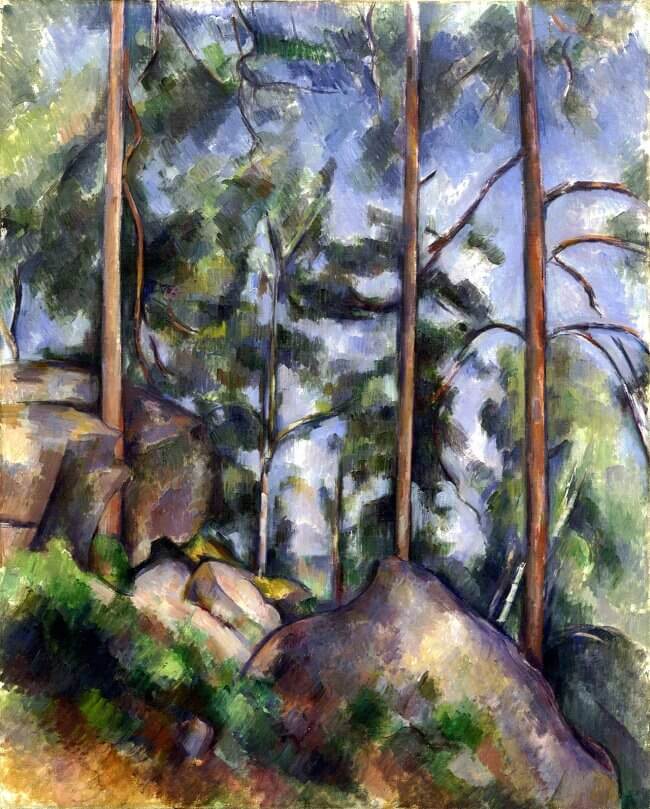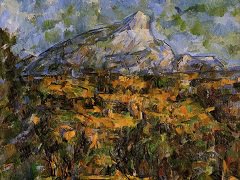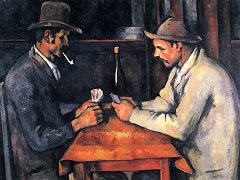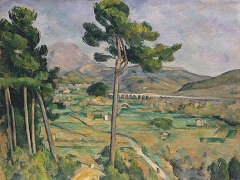Pines and Rocks, 1897 - by Paul Cezanne

Unlike the expansive vistas often seen in landscape paintings, Cezanne's Pines and Rocks is a tightly framed, compressed view of nature. Low bushes and massive boulders form a bulwark against the forest, and a vertical line of pine trees extends upward, obscuring the sky beyond. Though the trees and rocks firmly structure the scene, Cezanne also infused Pines and Rocks with a sense of airiness and movement. Glimpses of bare, unfinished canvas peek through the dense weave of brushstrokes.
At first glance, Cezanne's palette seems limited to blues, greens, and browns, but a closer look reveals endless variations of colors, including shades of yellows, violets, and reds. At close range the painting appears nearly abstract - a dancing network of innumerable brushstrokes, some parallel, others looser and more rapidly applied. Stepping back, these varied marks coalesce into a s himmering effect that Cezanne called "vibrations of light."














